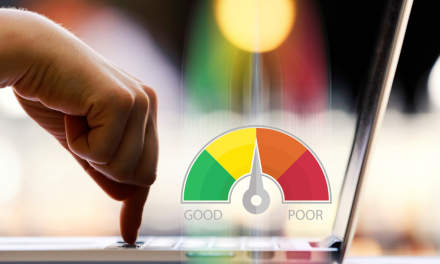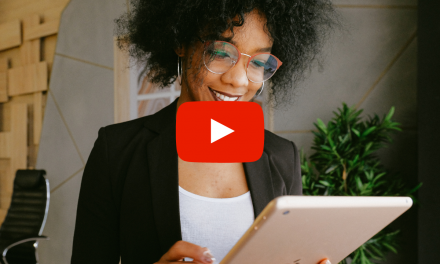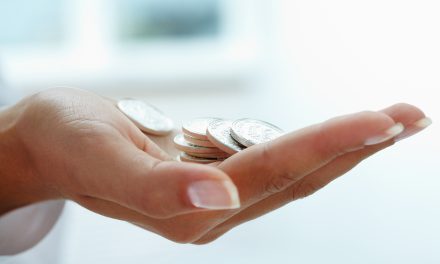
Medial Epicondylopathy

Introduction & Etiology
The medial epicondyle is home to the flexor-pronator group of muscles, which includes the pronator teres, flexor carpi radialis, palmaris longus, flexor digitorum superficialis, and flexor carpi ulnaris. (1) In addition to their stated mission, the flexor-pronators serve as a secondary stabilizer to the ulnar collateral ligament and medial elbow. (2)
Repetitive flexion and pronation create a strain on the common flexor origin, resulting in irritation. Recurring valgus stress is thought to be another principal trigger for medial epicondyle pain. (1,3,4) Injuries to the common flexor origin may occur abruptly as a result of a trauma, excessive stretch, or eccentric overload, but the majority of medial elbow problems can be blamed on chronic, degenerative “tendinopathies,” rather than any acute inflammatory response (tendonitis). (6-8) Tendinopathies begin from repetitive overloading & micro-tearing and culminate with a disorganized healing process that fails to regenerate a “normal” tendon. The origin of the pronator teres and flexor carpi radialis muscles on the medial supracondylar ridge is the most common site of pathology. (1,6,9,10)
Medial epicondylopathy is the most frequent cause of medial elbow pain but is 3-10 times less common than lateral epicondylopathy. (2,12-15) It is most prevalent in the fourth and fifth decades and affects men and women fairly equally. (6,12) The condition strikes the dominant arm in 75% – 82% of cases. (6,16-18)
Although the condition is named “golfer’s elbow,” one study found that 90- 95% of those affected were not even athletes, much less golfers. (13) Nonetheless, the condition is more common in certain populations, particularly those participating in sports that require repetitive flexion/pronation or exposure to valgus stress, such as golf and throwing. (19) Golfers are most vulnerable from the top of their backswing until ball impact. (19) Similarly, in baseball players, the medial elbow is at the highest risk during the acceleration phase of throwing. (19,20) The condition is common in racquet sports, particularly those who hit with heavy topspin. (16,21) Bowling, javelin throwing, football, archery, and weight lifting are potential triggers. (6,21,22) Occupations that require repetitive flexion and pronation, like carpentry, predispose patients to medial epicondylopathy. (6)
Several factors may increase an athlete’s risk of medial epicondylopathy, including inadequate warm-up, poor conditioning, weakness, inflexibility, and improper technique. (21) An improperly sized racquet grip excessively tightened racquet strings and using old or wet tennis balls increase elbow stress. (21) Smoking, obesity, and Type II diabetes are additional known risk factors. (12,55)
Clinical Presentation
Symptoms include an insidious onset, “dull aching” pain over the medial elbow that becomes more acute with use. (23) Patients with more significant irritation may complain of grip weakness and notice limitations in activities of daily living, like shaking hands, grasping objects, and opening jars. (24) Patients may notice local swelling. (25)
The peak area of tenderness is generally less than one fingerbreadth distal and anterior to the center of the medial epicondyle. (23) Reproduction of the chief complaint upon resisted forearm pronation is the most sensitive clinical finding for medial epicondylopathy. (26) Resisted wrist flexion will likely provoke discomfort. (26,27) In cases of chronic epicondylopathy, resisted elbow flexion may induce symptoms. (27) Initially, the active range of motion should be relatively full. Throwing athletes with chronic medial epicondylopathy may develop a flexion contracture that limits extension. (28,29) Up to 50% of professional baseball pitchers have a flexion contracture. (30)
The Golfer’s elbow test may
assist with diagnosis. The test is
performed on a seated patient with their palms resting on their knees. The
clinician grasps the patient’s hand and elbow and simultaneously supinates the
hand while extending the wrist and elbow.
Reproduction of pain suggests medial epicondyle involvement.

Alternate diagnoses commonly co-exist with medial epicondylopathy. Clinical evaluation should specifically seek to identify: ulnar neuritis, cubital tunnel syndrome, and ulnar collateral ligament instability. Cubital tunnel syndrome is present in up to 20% of patients with medial epicondylopathy. (16) Cubital tunnel patients frequently report paresthesia or pain extending distally from the medial epicondyle to the fourth or fifth digit. Nocturnal symptoms are common in cubital tunnel syndrome. Tenderness over the ulnar nerve or a positive Tinel sign would suggest ulnar nerve involvement (i.e. cubital tunnel syndrome).
The “Moving valgus stress test” is an accurate examination for the diagnosis of medial (ulnar) collateral ligament instability. (31) The test is performed on a seated patient with the shoulder abducted to 90 degrees and elbow maximally flexed. The clinician stabilizes the patient’s elbow with one hand, then grasps the patient’s wrist and maximally externally rotates the arm to apply a valgus stress to the elbow. After slack is removed, the clinician smoothly extends the patient’s elbow to approximately 30 degrees, assessing for reproduction of pain or instability. Pain over the medial collateral ligament, between 120 and 70 degrees of elbow flexion, or any perception of laxity suggests medial collateral ligament involvement. Evaluation for UCL stability is particularly important in throwers, as UCL deficiency is more common than medial epicondylopathy in this population. (27)
Diagnostics & Differential
Plain film radiography is often unnecessary for the diagnosis of medial epicondylopathy. (21) Radiographs may be required in cases of trauma and in those patients who are unresponsive to a trial of therapy. Radiographs are warranted in adolescents complaining of medial epicondyle pain, in order to rule out avulsion fracture. In children and adolescents, the open epiphyseal growth plate is two to five times weaker than in adults, where the growth plate is closed. This means that children are more likely to suffer apophyseal injuries (i.e. “Little League Elbow”) from stressors that would likely cause tendinopathies in adults. (32) Twenty to thirty percent of patients complaining of medial epicondyle pain will demonstrate radiographic evidence of calcification adjacent to the medial epicondyle, consistent with calcific tendinitis (hydroxyapatite deposition disorder). (21) Advanced imaging may be necessary to further define the diagnosis. Bone scanning can help spot: stress fractures, infections, and tumors. MRI can demonstrate ligamentous injury and osteochondritis dissecans. MRI arthrography may be more appropriate to identify ruptures of the medial collateral ligament. Diagnostic ultrasonography is a useful imaging tool for medial epicondylopathy. (33)
In addition to cubital tunnel syndrome, medial collateral ligament instability, and traction apophysitis (Little League Elbow), the differential diagnosis for medial epicondyle pain includes: muscle strain, cervical radiculopathy, fracture, infection, neoplasm, bursitis, flexion contracture, pronator quadratus syndrome, intra-articular injury, osteochondritis dissecans, anterior interosseous nerve entrapment, and rheumatologic disease.
Management
Medial epicondylopathy can prove to be a defiant condition. Between 5 and 26% of patients experience recurrent episodes, and 40% suffer prolonged discomfort. Almost twenty-five percent of unmanaged patients will continue to experience symptoms for over one year. (34) Nineteen percent of patients continue to experience symptoms after three years. (14,35) Conservative, non-surgical management is the most appropriate treatment for medial epicondylopathy. (6) Conservative care of chronic tendinopathy has proven to be as effective as surgery for long-term pain relief, ROM, function, tendon force, and quality of life. (63)
Selective rest, ice, and NSAIDs may help alleviate acute inflammation, but do little to alter the long-term course of chronic tendinopathy. A more comprehensive management approach for chronic complaints adds bracing eccentric rehabilitation, and activity modification. Athletes may need to limit or temporarily discontinue offensive activities. Applying ice or ice massage may help alleviate acute pain. Modalities including e-stim, ultrasound, and laser, have varying levels of support and may be useful to help control symptoms. (56) Clinicians should consider the use of a counter-force brace to dampen flexion/pronation forces to the medial epicondyle. (21,36) Counter-force braces should not be used in cases of concurrent cubital tunnel syndrome, as the additional pressure will likely exacerbate compressive neuropathy symptoms. Cock-up wrist splints may be useful at night to allow the tendon to “heal” in a neutral or lengthened position. (21,37)
Soft tissue manipulation, stretching, and myofascial release techniques are necessary to promote flexibility of the forearm muscles. (6) Clinicians should consider the use of IASTM to release adhesions within the common flexor tendon. As an additional benefit, IASTM may facilitate a healing response by inducing controlled microtrauma. (38) Maintaining range of motion and addressing flexion contractures is particularly important in throwing athletes. Mobilization or oscillatory manipulation may help restore full extension in cases of flexion contracture. (39) The benefit of cervical spine manipulation has been established for patients with elbow pain. (40) Cervical manipulation leads to immediate increases in voluntary activation of the elbow flexors and facilitation of motor cortical output. (62) Clinicians should address restrictions at the elbow, wrist, and shoulder, as well.
The goal of tendinopathy rehab is to carefully balance stimulating a controlled musculotendinous inflammatory response without causing greater injury or exacerbating symptoms. Rehab should begin with moderate effort and low repetitions. Response to tensile loading may be assessed by the patient’s change in night pain. Increases in night pain indicate the current rehab load is excessive. Progression advances when the patient tolerates a given level of tensile load. (61)
Like other tendinopathies,
eccentric strengthening of the wrist flexors and forearm pronators is believed
to be a critical component of treatment. (3,41,57) The “Tyler Twist” exercise,
utilizing a Theraband Flexbar, is a novel approach to eccentric strengthening
that has shown significant pain reduction and excellent outcomes in limited
trials for lateral epicondylopathy.
(58,59) The “Reverse
Tyler Twist”
exercise was created for the treatment of medial epicondylopathy. (58,59)

NSAIDS may provide some temporary analgesic benefit, but since medial epicondylopathy is not a true inflammatory condition, their usefulness is limited. Likewise, corticosteroid injections have demonstrated short-term improvement with little long-term effect. (42,43)
The benefit of utilizing autologous blood injections, PRP injections, and Extracorporeal Shock-Wave Therapy (ESWT) for the treatment of medial epicondylopathy, has not been examined closely, but mixed data supports their use for lateral epicondylopathy. (44-52,60). The addition of dry needling to autologous blood injection has proven beneficial in recalcitrant cases of medial epicondylopathy. (52) Nitroglycerin patches applied over the damaged tendon are thought to stimulate collagen production and vasodilation and have shown benefit in the treatment of elbow tendinopathies. (53)
Surgical intervention should be considered for chronic tendinopathy cases that are unresponsive after three to 6-12 months of care. (54,63) Various surgical techniques exist to release the flexor origin and excise pathologic tissue. Good surgical outcomes have been demonstrated in greater than 80% of recalcitrant cases. (21)
References
1. Jobe FW, Cicotti MG. Lateral and medial epicondylitis of the elbow. J Am Acad Orthop Surg 1994;2:1–8.
2. Jenkins SPR. Sports Science Handbook. p. 75 Multi-science Publishing. 2005
3. Hudes K. Conservative management of a case of medial epicondylosis in a recreational squash player. J Can Chiropr Assoc. 2011 March; 55(1): 26–31.
4. Descatha A, Leclerc A, Chastang JF, Roquelaure Y. Medial epicondylitis in occupational settings: prevalence, incidence and associated risk factors. JOEM September. 2003;45(9):993–1001.
6. Ciccotti M C, Schwaetz M A, Ciccotti M G. Diagnosis and treatment of medial epicondylitis of the elbow. Clin Sports Med 2004. 23693–705.705.
7. Kraushaar BS, Nirschl RP. Tendinosis of the elbow (tennis elbow). Clinical features and findings of histological, immunohistochemical, and electron microscopy studies. J Bone Joint Surg Am. Feb 1999;81(2):259-78.
8. Ljung BO, Forsgren S, Fridén J. Substance P and calcitonin gene-related peptide expression at the extensor carpi radialis brevis muscle origin: implications for the etiology of tennis elbow. J Orthop Res. Jul 1999;17(4):554-9.
9. Nirschl RP. Prevention and treatment of elbow and shoulder injuries in the tennis player. Clin Sports Med. Apr 1988;7(2):289-308.
10. Nirshal RP. Muscle and tendon trauma: tennis elbow. In: The Elbow and Its Disorders. Philadelphia, Pa: WB Saunders Co; 1993:481-96.
12. Shiri R et al. Prevalence and Determinants of Lateral and Medial Epicondylitis: A Population Study Am. J. Epidemiol. (2006) 164 (11): 1065-1074.
13. Polkinghorn B. A novel method for assessing elbow pain resulting from epicondylitis. J Chiropractic Medicine. 2002;3(1):117–121.
15. McHardy A, Pollard H, Luo K. Golf injuries: a review of the literature. Sports Med. 2006;36(2):171–187.
16. Kohn HS. Prevention and treatment of elbow injuries in golf. Clin Sports Med. Jan 1996;15(1):65-83.
17. O’Dwyer K, Howie C. Medial epicondylitis of the elbow. Int Orthopaedics. 1995;9:69–71.
18. Bourne I. Epicondylitis treated by local corticosteroid injection. Acupuncture in Medicine November. 1997;15(2):79–89.
19. Hannah GA, Whiteside JA. The elbow in athletics. Sports Medicine Secrets. Philadelphia, Pa: Hanley & Belfus; 1994:249-55.
20. Glousman RE, Barron J, Jobe FW, et al. An electromyographic analysis of the elbow in normal and injured pitchers with medial collateral ligament insufficiency. Am J Sports Med 1992;20:311–7.
21. Plancher KD, Halbrecht J, Lourie GM. Medial and lateral epicondylitis in the athlete. Clin Sports Med. Apr 1996;15(2):283-305.
22. Vangsness C, Jobe F W. Surgical technique of medial epicondylitis: results in 35 elbows. J Bone Joint Surg Br 1991. 73409–411.411.
23. Koval, KJ (ed): Orthopaedic Knowledge Update 7. Rosemont, IL. American Academy of Orthopaedic Surgeons. 2002 Ch. 25, pp. 251-262.
24. Vicenzino B, Brooksbank J, Minto J, Offord S, Paungmali A. Initial effects of elbow taping on pain-free grip strength and pressure pain threshold. J Orthop Sports Phys Ther. Jul 2003;33(7):400-7.
25. Bennett JB. Lateral and medial epicondylitis. Hand Clin 1994;10:157 – 63.
26. Richard MJ, Aldridge JM 3rd, Wiesler ER, et al. Traumatic valgus instability of the elbow: pathoanatomy and results of direct repair. J Bone Joint Surg Am 2008;90:2416–22
27. The Health Science.com Medial Epicondylitis. Accessed 1/7/14
28. Ciccotti MG. Epicondylitis in the athlete. Instr Course Lect 1999;49:375 – 81.
29. Jobe FW, Ciccotti MG. Lateral and medial epicondylitis of the elbow. J Am Acad Orthop Surg 1994;2:1 – 8.
30. King JW, Brelsford JH, Tullos HS. Analysis of the pitching arm of the professional baseball pitchers. Clin Orthop 1969;67:116 – 23
31. O’Driscoll, S.W., Lawton, R.L., Smith, A.M. (2005). The “moving valgus stress test” for medial collateral ligament tears of the elbow. Am J Sports Med, 33(2):231-239.
32. Schwab SA. Epiphyseal injuries in the growing athlete. Can Med Assoc J 1977;117 : 626-630
33. Assendelft WJ, Hay EM, Adshead R, Bouter LM. Corticosteroid injections for lateral epicondylitis: a systematic overview. Br J Gen Pract. Apr 1996;46(405):209-16.
34. Smidt N, van der Windt DA, Assendelft WJ, et al; Corticosteroid injections, physiotherapy, or a wait-and-see policy for lateral epicondylitis: a randomised controlled trial. Lancet. 2002 Feb 23;359(9307):657-62.
35. Descatha A, Leclerc A, Chastang JF, Roquelaure Y. Medial epicondylitis in occupational settings: prevalence, incidence and associated risk factors. JOEM September. 2003;45(9):993–1001.
36. Thurston AJ. Conservative and surgical treatment of tennis elbow: a study of outcome. Aust N Z J Surg. Aug 1998;68(8):568-72.
37. Vicenzino B, Brooksbank J, Minto J, Offord S, Paungmali A. Initial effects of elbow taping on pain-free grip strength and pressure pain threshold. J Orthop Sports Phys Ther. Jul 2003;33(7):400-7
38. Melham TJ, Sevier TL, Malnofski MJ, Wilson JK, Helfst RH. Chronic ankle pain and fibrosis successfully treated with a new non-invasive augmented soft tissue secondary to a history of repetitive use or excessive overload.
39. Wilk KE et. al, Rehabilitation of the thrower’s elbow Clin Sports Med 23 (2004) 765–801
40. Josue Fernández-Carnero, PhD, PT, Joshua A. Cleland, PhD, and Roy La Touche Arbizu, PT Examination of Motor and Hypoalgesic Effects of Cervical vs Thoracic Spine Manipulation in Patients with Lateral Epicondylalgia: Clinical Trial. J Manipulative Physiol Ther 2011;34:432-440
41. Jean-François Kaux, Current opinions on tendinopathy Journal of Sports Science and Medicine (2011) 10, 238-253
42. Stahl S, Kaufman T. The efficacy of an injection of steroids for medial epicondylitis. A prospective study of sixty elbows. J Bone Joint Surg Am. Nov 1997;79(11):1648-52.
43. Verhaar JA, Walenkamp GH, van Mameren H, et al. Local corticosteroid injection versus Cyriax-type physiotherapy for tennis elbow. J Bone Joint Surg Br. Jan 1996;78(1):128-32
44. Connell DA, Ali KE, Ahmad M, et al. Ultrasound-guided autologous blood injection for tennis elbow.Skeletal Radiol. Jun 2006;35(6):371-7.
45. Edwards SG, Calandruccio JH. Autologous blood injections for refractory lateral epicondylitis. J Hand Surg[Am]. Mar 2003;28(2):272-8.
46. Peerbooms JC, Sluimer J, Bruijn DJ, Gosens T. Positive effect of an autologous platelet concentrate in lateral epicondylitis in a double-blind randomized controlled trial:latelet-rich plasma versus corticosteroid injection with a 1-year follow-up. Am J Sports Med. Feb 2010;38(2):255-62
47. Rompe JD, Hope C, Küllmer K, Heine J, Bürger R. Analgesic effect of extracorporeal shock-wave therapy on chronic tennis elbow. J Bone Joint Surg Br. Mar 1996;78(2):233-7
48. Speed CA, Nichols D, Richards C, et al. Extracorporeal shock wave therapy for lateral epicondylitis–a double blind randomised controlled trial. J Orthop Res. Sep 2002;20(5):895-8.
49. Haake M, König IR, Decker T, et al. Extracorporeal shock wave therapy in the treatment of lateral epicondylitis : a randomized multicenter trial. J Bone Joint Surg Am. Nov 2002;84-A(11):1982-91
50. Melikyan EY, Shahin E, Miles J, Bainbridge LC. Extracorporeal shock-wave treatment for tennis elbow. A randomised double-blind study. J Bone Joint Surg Br. Aug 2003;85(6):852-5
51. Chung B, Wiley JP. Effectiveness of extracorporeal shock wave therapy in the treatment of previously untreated lateral epicondylitis: a randomized controlled trial. Am J Sports Med. Oct-Nov 2004;32(7):1660-7
52. S P S Suresh, K E Ali, H Jones, and D A Connell Medial epicondylitis: is ultrasound guided autologous blood injection an effective treatment? Br J Sports Med. 2006 November; 40(11): 935–939.
53. Paoloni JA, Appleyard RC, Nelson J, Murrell GA. Topical nitric oxide application in the treatment of chronic extensor tendinosis at the elbow: a randomized, double-blinded, placebo-controlled clinical trial. Am J Sports Med. Nov-Dec 2003;31(6):915-20
54. Grana W. Medial epicondylitis and cubital tunnel syndrome in the throwing athlete. Clinics in Sports Medicine July. 2001;20(3):541–548.
55. Shiri R, Vikari-Juntura E, Varonen H, Heliovaara M. Prevalence and determinants of lateral and medial epicondylitis: a population study. Am J Epidemiology. 2006;164(11):1065–1074.
56. Simunovic Z, Trobonjaca T. Treatment of medial and lateral epicondylitis–tennis and golfer’s elbow–with low level laser therapy: a multicenter double blind, placebo-controlled clinical study on 324 patients. J Clin Laser Med Surg. 1998 Jun;16(3):145-51.
57. Stanish W.D., Rubinovich R.M., Curwin S., Eccentric exercise in chronic tendinitis. Clin Orthop Relat Res. 1986;208:65–68.
58. Page P. A New Exercise For Tennis Elbow That Works! N Am J Sports Phys Ther. Sep 2010; 5(3): 189–193.
59. Tyler T.F., et al., Addition of isolated wrist extensor eccentric exercise to standard treatment for chronic lateral epicondylosis: A prospective randomized trial. J Shoulder Elbow Surg. 2010; 19(6):917–922
60. Dedes V, Stergioulas A, Kipreos G, Dede AM, Mitseas A, Panoutsopoulos GI. Effectiveness and Safety of Shockwave Therapy in Tendinopathies. Mater Sociomed. 2018 Jun;30(2):131-146. doi: 10.5455/msm.2018.30.141-146.
61. Cook JL, Purdam CR. The challenge of managing tendinopathy in competing athletes. Br J Sports Med. 2014;48:506-509.
62. Kingett M et al. Increased Voluntary Activation of the Elbow Flexors Following a Single Session of Spinal Manipulation in a Subclinical Neck Pain Population. Brain Sci. 2019 Jun 12;9(6). pii: E136.
63. Challoumas D, Clifford C, Kirwan P, Millar NL. How does surgery compare to sham surgery or physiotherapy as a treatment for tendinopathy? A systematic review of randomised trials. BMJ Open Sport Exerc Med. 2019;5(1):e000528. Published 2019 Apr 24.


















